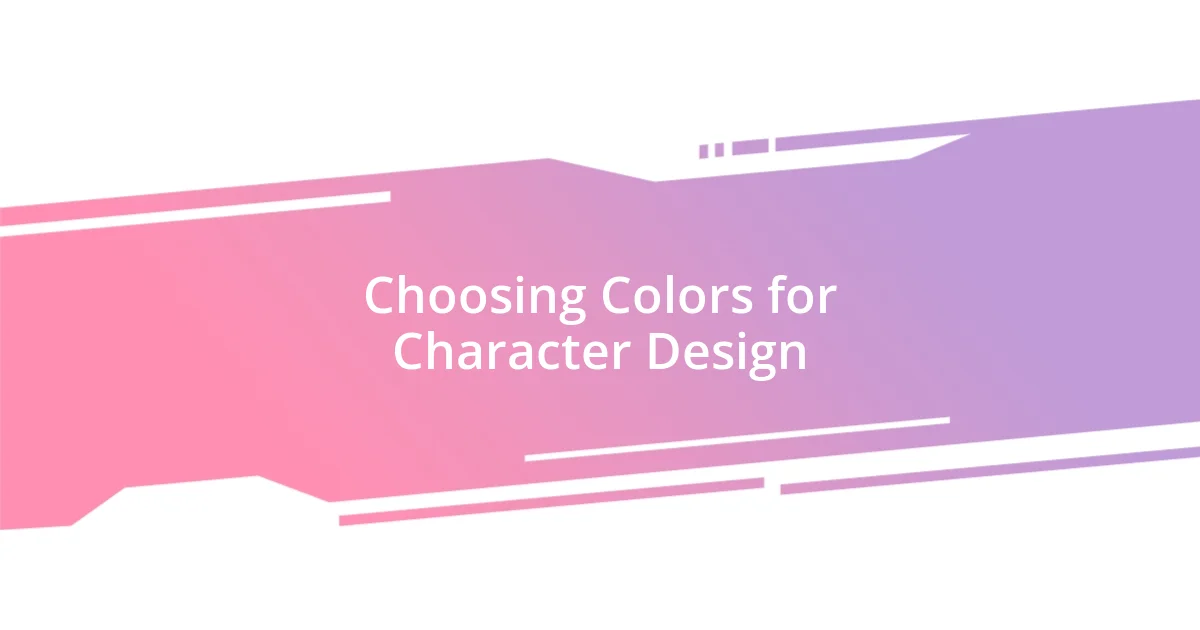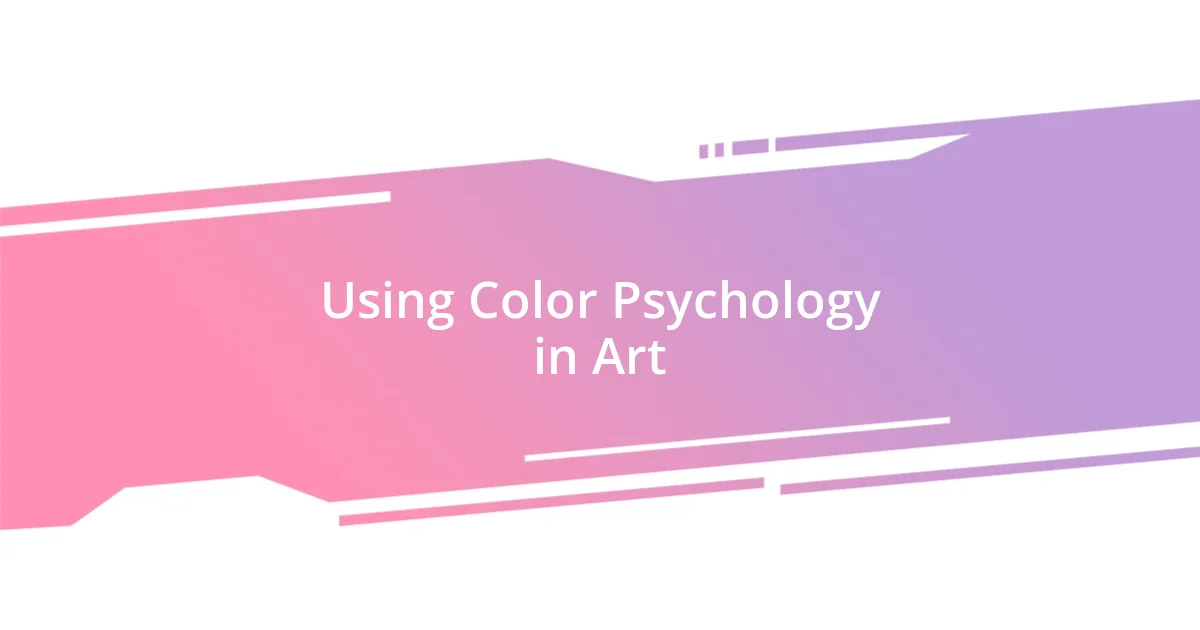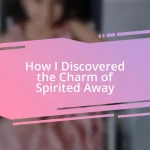Key takeaways:
- Understanding color theory—including primary, secondary, complementary, and analogous colors—enhances emotional storytelling in fantasy art.
- Using color psychology allows artists to convey specific feelings and narratives, influencing how viewers connect with characters and scenes.
- Testing color choices and gathering feedback can lead to significant improvements in artwork, ensuring that the final palette resonates with the intended audience.

Understanding Color Theory Basics
Color theory is a fascinating foundation for anyone stepping into the world of fantasy art. It’s not just about selecting colors that look good together; it’s about understanding the emotions and meanings that colors convey. I remember the first time I painted a sunset scene. I struggled to mix the right hues and realized how a vibrant orange could evoke warmth, while a cool blue could bring a sense of calm. It’s this interplay that can transform a simple illustration into a powerful visual story.
Understanding primary, secondary, and tertiary colors is essential for creating compelling artwork. The primary colors—red, blue, and yellow—form the basis for everything else. I often think of them as the building blocks of my visual language. When I experimented with mixing these colors, I felt like an alchemist crafting new shades! The secondary colors—green, orange, and purple—emerge from this mixing, adding depth and richness to my palette.
Consider how complementary colors, or those opposite each other on the color wheel, create striking contrasts that draw attention. I’ve played with this concept countless times; using a bright red against a deep green made my fantasy characters pop off the canvas. Have you ever wondered how color can influence a viewer’s perception? I can tell you that it’s a powerful tool, one that every artist should explore to evoke feelings and set the mood in their work.

Exploring Color Harmonies and Schemes
Exploring color harmonies and schemes can be an exhilarating journey in fantasy art. When I work on a piece, I often find myself gravitating towards analogous colors—those adjacent on the color wheel. For instance, in one of my recent paintings, I used shades of blue, teal, and green to create a serene underwater scene. The way those colors blended felt like breathing life into the artwork, making it tranquil yet enchanting.
Another fascinating aspect is the use of triadic colors, which are evenly spaced around the color wheel. One project I remember vividly involved utilizing red, yellow, and blue. The contrast brought vibrancy and energy, effectively capturing the essence of a lively fantastical world. I genuinely believe that experimenting with various color schemes not only enhances visual appeal but can also profoundly influence the storytelling aspect of my art.
To help clarify these concepts, I’ve created a comparison table that outlines different color harmonies. This visual can serve as a quick reference when deciding which scheme to implement in your own pieces. Just like in cooking, where the right mix of spices elevates a dish, the right color schemes can transform your artwork into a captivating experience.
| Color Harmony | Description |
|---|---|
| Complementary | Colors opposite each other on the color wheel, creating high contrast. |
| Analogous | Colors next to each other on the wheel, producing a harmonious and calming effect. |
| Triadic | Three evenly spaced colors around the wheel, providing vibrant contrasts. |

Choosing Colors for Character Design
When it comes to choosing colors for character design, I’ve learned to think beyond mere aesthetics and focus on personality traits and backstories. For instance, I once created a fierce warrior character using deep, burnt reds and blacks. These colors not only highlighted her strength but also hinted at a shadowy past, adding layers to her persona. I believe that every color choice should reflect an aspect of the character’s identity, helping to engage viewers on an emotional level.
Here are some tips that guide my color selections for character design:
- Emotional Resonance: Choose colors that evoke feelings aligned with your character’s personality (bold colors for brave characters, softer hues for nurturing ones).
- Cultural Significance: Consider colors that hold particular meanings in different cultures, enhancing the character’s backstory and context.
- Contrast and Hierarchy: Use contrasting colors to emphasize specific features, such as eyes or armor, drawing the viewer’s attention where needed.
- Muting for Depth: Don’t shy away from muted tones; they can add sophistication and backstory, creating a richer visual narrative.
- Experiment with Shades: Playing with lighter or darker shades of a color can convey different moods, allowing for versatile character expressions.
Bringing characters to life through color is like painting their soul on canvas. Each choice I make carries weight, and I find it immensely rewarding to see how these details resonate with others.

Creating Atmosphere with Color
Creating atmosphere in fantasy art is heavily influenced by color choices, something I’ve come to appreciate through many projects. I recall a scene I painted with swirling mists and muted greens that encapsulated an eerie forest. The cool colors stirred an unsettling calm, transporting viewers into a realm that felt both magical and foreboding. Isn’t it fascinating how colors can manipulate emotions in art?
When I think of warm tones like oranges and yellows, I can nearly feel the warmth of sunlight shining down on a vibrant marketplace. For a piece reflecting a bustling fantasy bazaar, I opted for golden yellows against deep indigos. This juxtaposition crafted a dynamic atmosphere that felt alive, illustrating the hustle and bustle of trade in a wondrous world. How can a simple choice of hues breathe life into a scene so vividly?
Moreover, I truly believe that the context of a color can shift the mood completely. A soft lavender might suggest tranquility, while the same shade used in an ominous background can evoke feelings of uncertainty. I remember a conceptual artwork where I reworked a twilight sky from light violets to stormy purples; the transformation created a palpable tension. Have you ever changed a color and noticed how it altered the entire vibe of a piece? It’s a testament to the incredible power of color in storytelling.

Using Color Psychology in Art
Using color psychology in art has become a vital tool in my creative process. I often find myself color-matching hues based on the emotional tone I want to convey. For example, when I wanted to depict sadness in a character’s lonely journey, I chose a palette dominated by blues and grays. The weight of these colors wrapped the scene in a somber atmosphere, encouraging viewers to feel the character’s isolation. Have you ever noticed how a simple shift to cooler tones can instantly change the mood?
Colors carry inherent psychological associations that I draw upon to deepen my narratives. In one piece, I explored the fiery nature of a tempestuous relationship by using vibrant reds and jagged oranges to express passion and conflict. The intense palette almost felt like a visual scream, immersing the viewer in the chaotic emotions of the characters. I think it’s fascinating how these colors can act like a bridge to our emotions, enabling us to connect with stories on a personal level.
It’s interesting to reflect on how my understanding of color psychology has evolved through experimentation. In a recent artwork, I played with green shades to elicit feelings of growth and renewal, but I mixed in a touch of yellow to symbolize hope. The result was enchanting; it created a vibrant garden scene that resonated with viewers, capturing a sensation of optimism. Have you ever altered a color scheme and this led to unexpected emotional connections? I believe this is the transformative power of using color psychology in our artwork—it can turn simple visuals into profound narratives.

Testing Your Color Choices
Once I finalize my color scheme, I like to test it in various ways. For instance, I often create thumbnail sketches with different palettes to see how they play out in small bites. It’s astounding how a tiny shift in a hue can dramatically change the piece’s overall feel. Have you ever experimented with colors and noticed how the smallest adjustments can fill an image with life?
I vividly remember a project where I had a vibrant sunset background for a fantasy scene. Initially, I used bright oranges, but switching to a muted coral made the foreground characters stand out more, creating a sense of depth. This not only enhanced the visual hierarchy but also evoked feelings of nostalgia. Isn’t it energizing to discover color choices that significantly pivot the narrative you’re trying to tell?
In my experience, getting feedback from fellow artists or even friends can be invaluable. They often notice nuances that I might miss after being immersed in the creative process. On one occasion, a talented friend suggested toning down a bright blue I had chosen, favoring a teal instead. The result was astonishing—this simple change gave the piece a ghostly yet enchanting quality that resonated more with the story. What has your experience been with getting a second opinion on your color choices? It’s moments like these that remind me of the collaborative spirit in art, where insights can lead to beautifully unexpected outcomes.

Finalizing Your Fantasy Art Palette
When I reach the stage of finalizing my fantasy art palette, I find it rewarding to reflect on how far I’ve come. I usually create a “final comparison board,” displaying all my color choices side by side. It’s amazing to witness how certain combinations pop or blend seamlessly, which is crucial in emphasizing the emotions or themes of the artwork. Do you ever find yourself surprised by how some colors interact with others when placed together?
I recall a time when I was finalizing a palette for a mystical forest scene. At first, I leaned heavily on greens and browns, thinking they would perfectly represent nature. However, adding a touch of lavender completely transformed the mood, infusing it with a sense of magical wonder. Suddenly, the forest felt alive, almost breathing, inviting the viewer to wander through its mysteries. Isn’t it incredible how a single color can completely redirect a narrative?
As I finalize my palette, I also take a moment to step back and ask, “Will this resonate with my audience?” This instinct nudges me to consider cultural implications and emotional triggers tied to color choices. Just recently, I was working on a piece inspired by folklore, and I turned to warmer tones that often symbolize comfort and familiarity. Connecting with my audience through intentional color selection makes the process infinitely more fulfilling. How do you ensure your colors speak to the emotions you want to evoke? Each decision and adjustment adds another layer to the storytelling tapestry, making it all the more rewarding.














